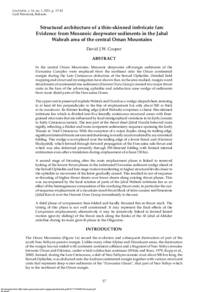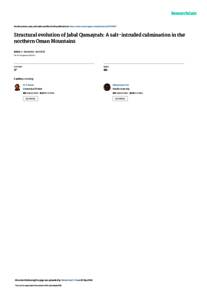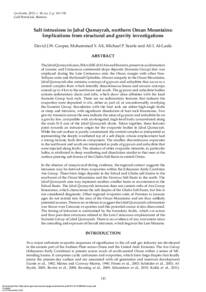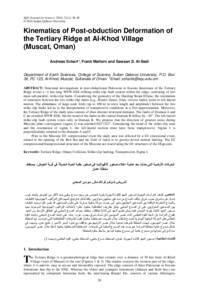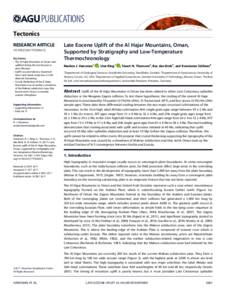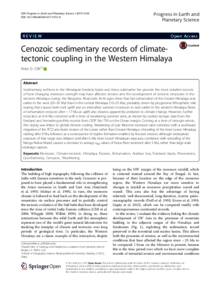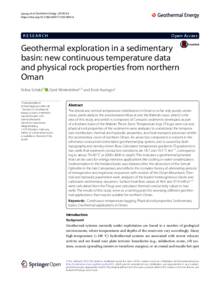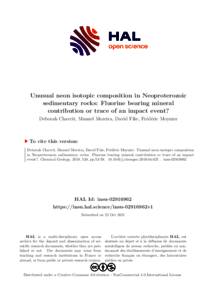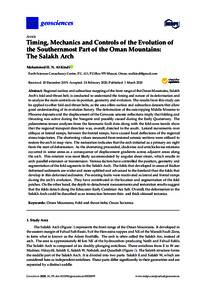Document
Structural architecture of a thin-skinned imbricate fan : evidence from mesozoic deepwater sediments in the Jabal Wahrah area of the central Oman Mountains.
Identifier
DOI: 10.2113/geoarabia160117
Publisher
Gulf Petrolink.
Gregorian
2011-06
Language
English
English abstract
In the central Oman Mountains, Mesozoic deepwater off-margin sediments of the Hawasina Complex were emplaced from the northeast onto the Oman continental margin during the Late Cretaceous obduction of the Semail Ophiolite. Detailed field mapping and structural investigation have shown that, in the area studied, margin-ward detachment of continental rise sediments (Hamrat Duru Group) created two major thrust units in the face of the advancing ophiolite and subduction zone wedge of sediments from more distal parts of the Hawasina Ocean. The upper unit is preserved in jabais Wahrah and Hurah as a wedge-shaped sheet, restoring to at least 60 km perpendicular to the line of emplacement but only about 500 m thick at its maximum. Its thinner leading edge (Jabal Wahrah) comprises a classic thin-skinned imbricate fan which is divided into five laterally continuous structural zones with finergrained structures that are influenced by local stratigraphical variations in its Early Jurassic to Early Cretaceous section. The rear part of the thrust sheet (Jabal Hurah) behaved more rigidly, reflecting a thicker and more competent sedimentary sequence spanning the Early Triassic to ?mid Cretaceous. With the exception of a major duplex along its trailing edge, significant internal thrusts are rare and shortening is mostly accommodated by asymmetrical folding. This wedge was emplaced over the trailing edge of a lower thrust unit (Hammat Shulayshil), which formed through forward propagation of the Hawasina sole thrust and which was also deformed primarily through SW-directed folding with limited internal imbrication even after a translation during emplacement of at least 150 km. A second stage of thrusting after the main emplacement phase is linked to renewed locking of the lowest thrust planes in the imbricated Hawasina sediment wedge ahead of the Semail Ophiolite and late-stage motion transferring to higher structural levels closer to the ophiolite as movement of the latter gradually ceased. This resulted in out-of-sequence re-thrusting of higher thrust sheets over lower sheets along existing thrust planes. This was accompanied by the local rotation of parts of the Jabal Wahrah imbricate fan as an effect of the heterogeneous composition of the overlying thrust units, in particular the outof-sequence emplacement of a mountain-sized thrust block of intra-oceanic reef limestone (Jabal Kawr) over the Hamrat Duru Group immediately to the east. A third phase of compression then folded and locally thrusted this re-thrust stack. The timing of this phase is not well constrained. It may represent the final effects of the Campanian emplacement; alternatively it may be tentatively linked to limited lateral motion (gravity sliding) of the thrust stack along the flanks of the Al Jabal al-Akhdar anticline during its main growth phase in the Oligocene.
Member of
ISSN
1025-6059
Resource URL
Category
Journal articles

